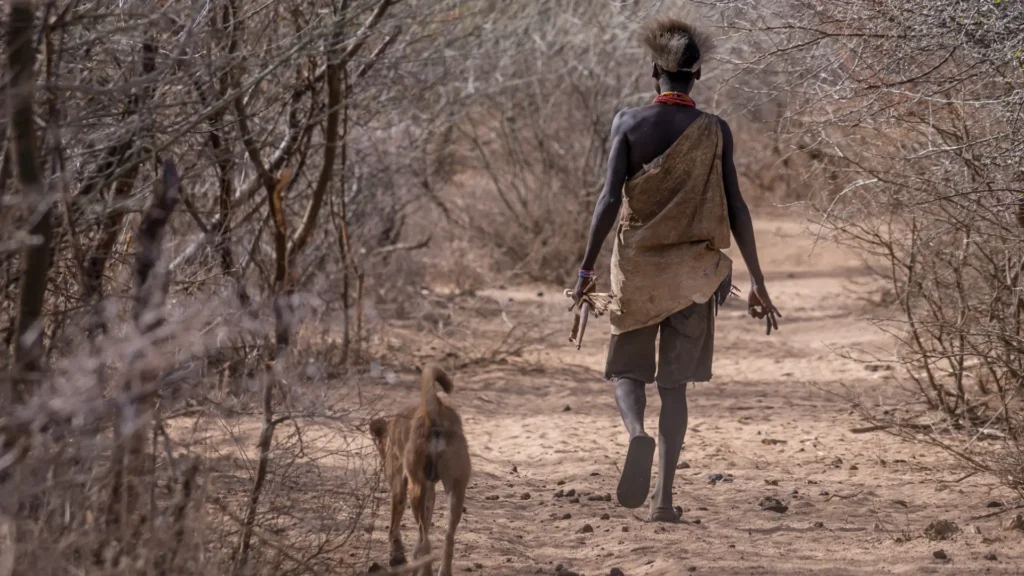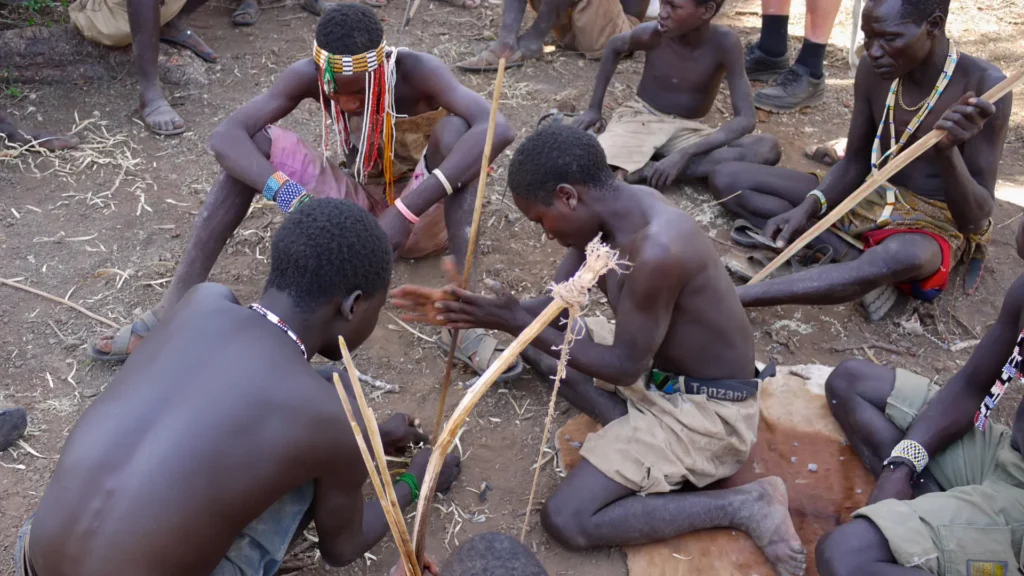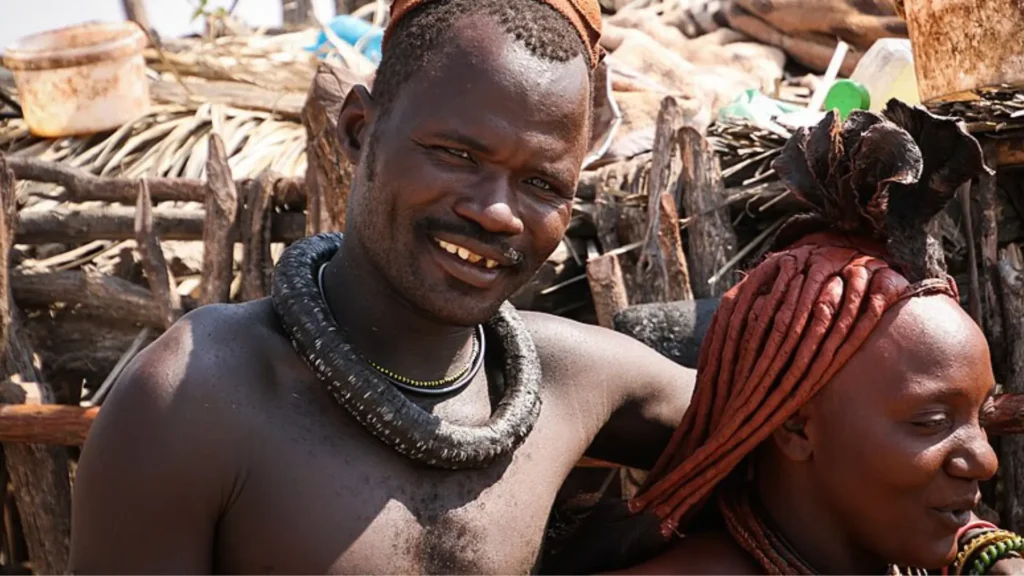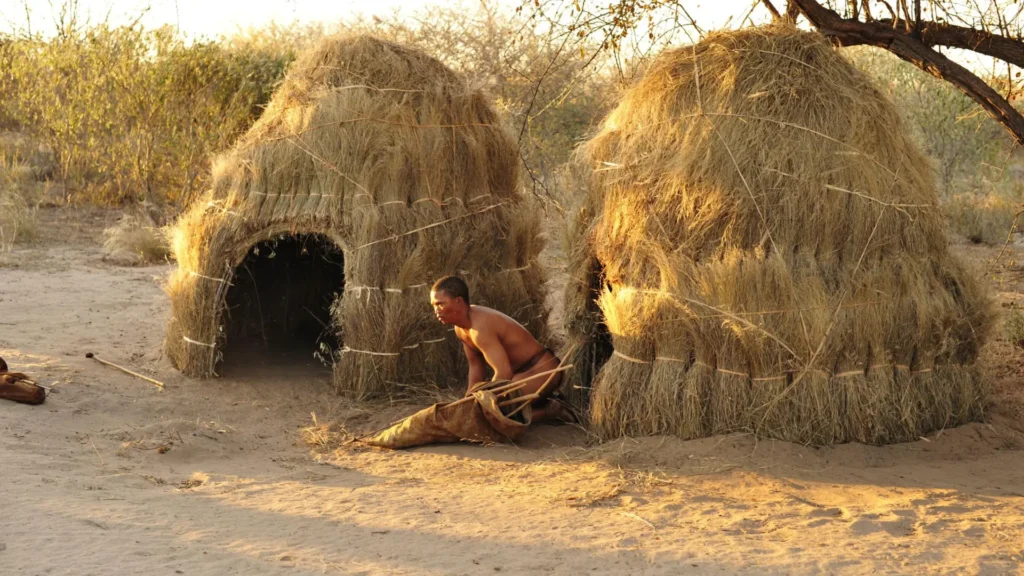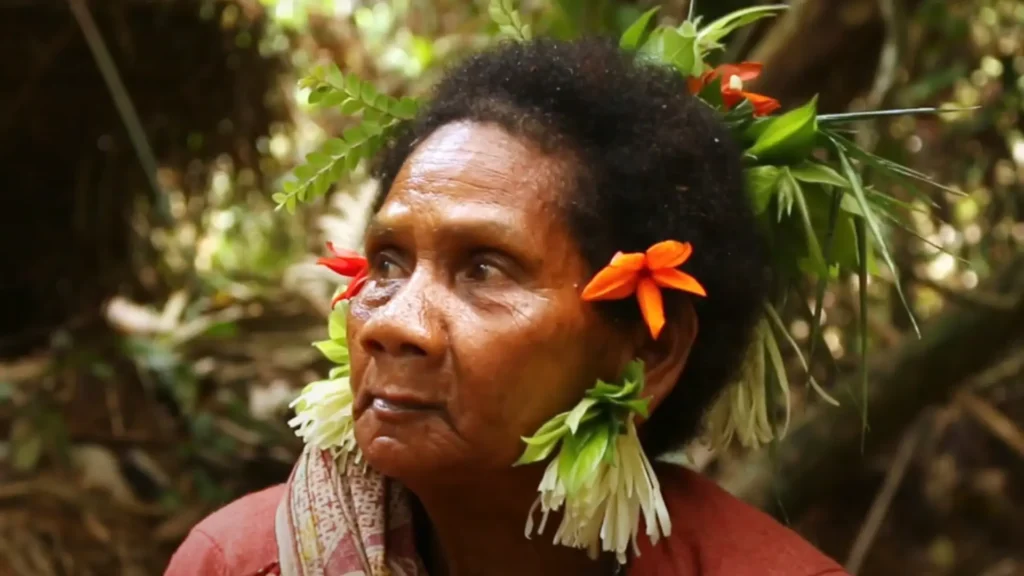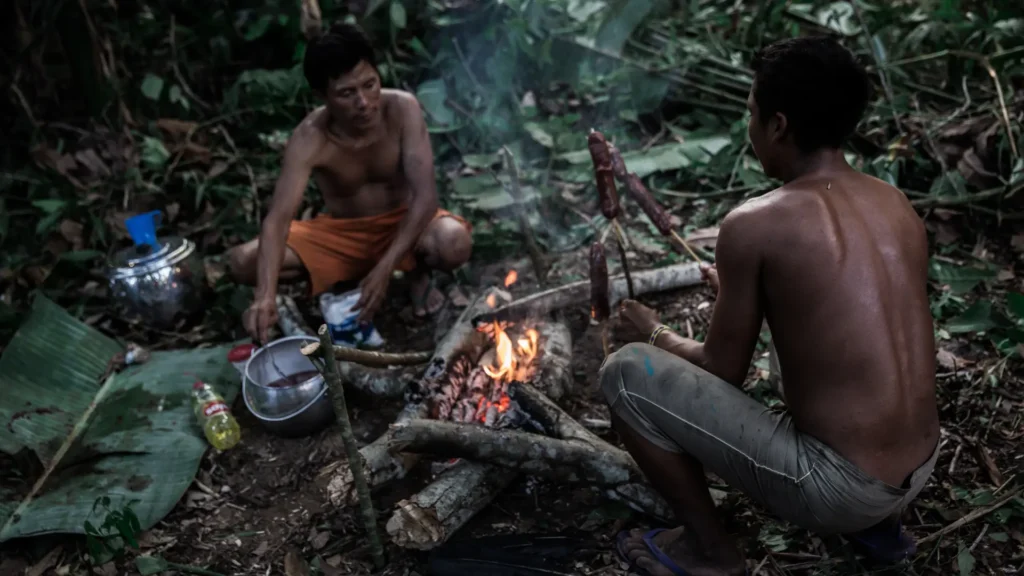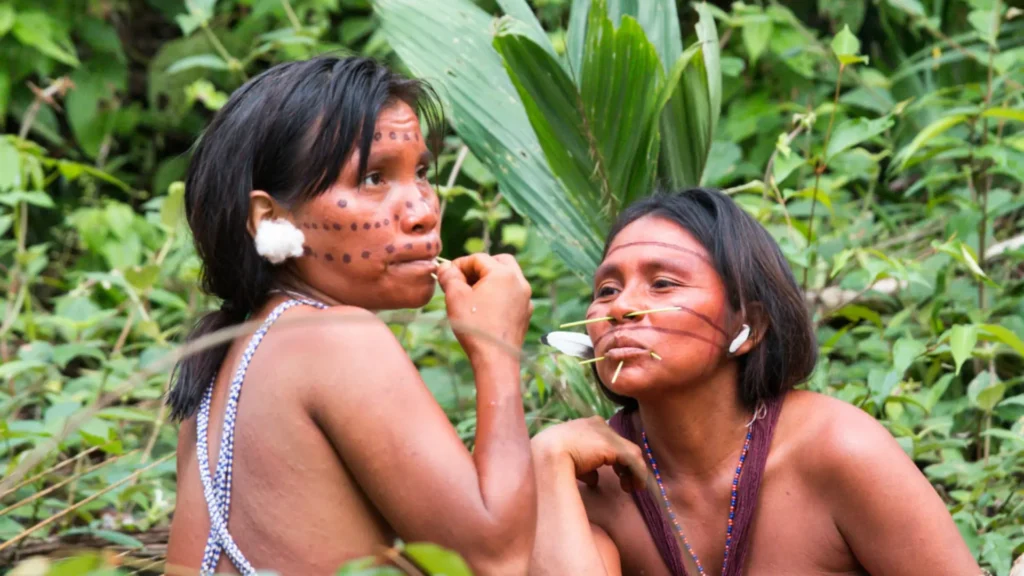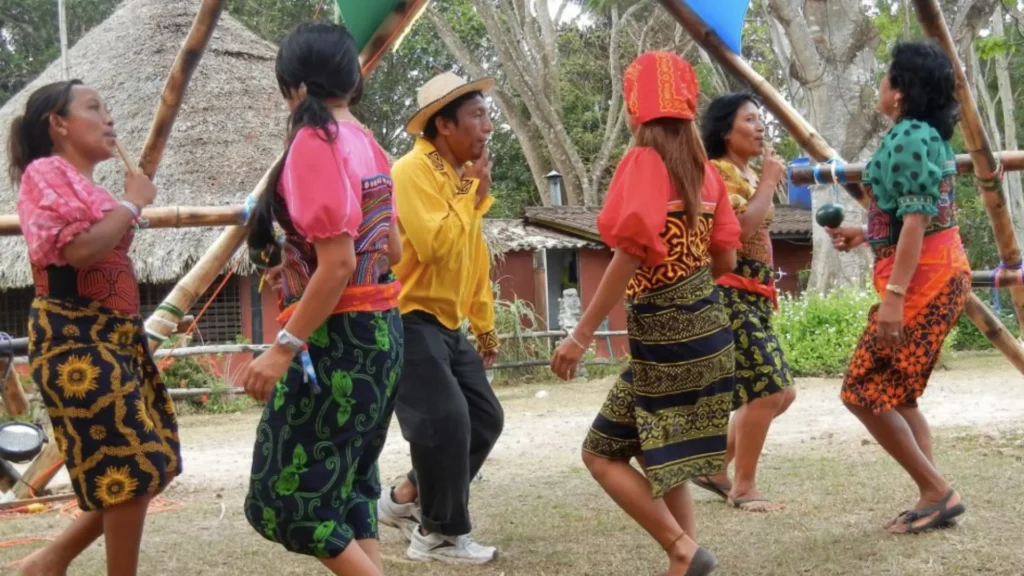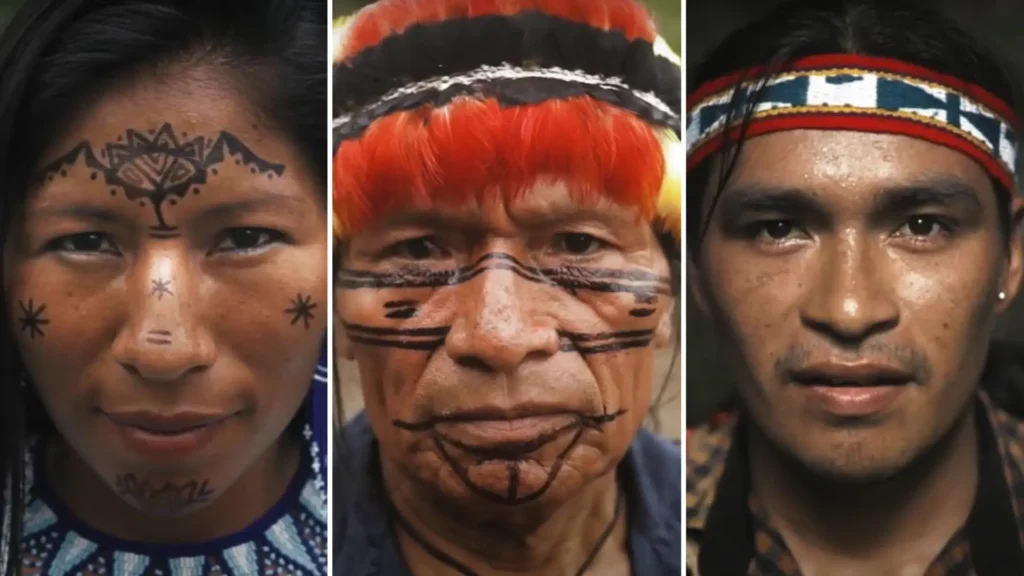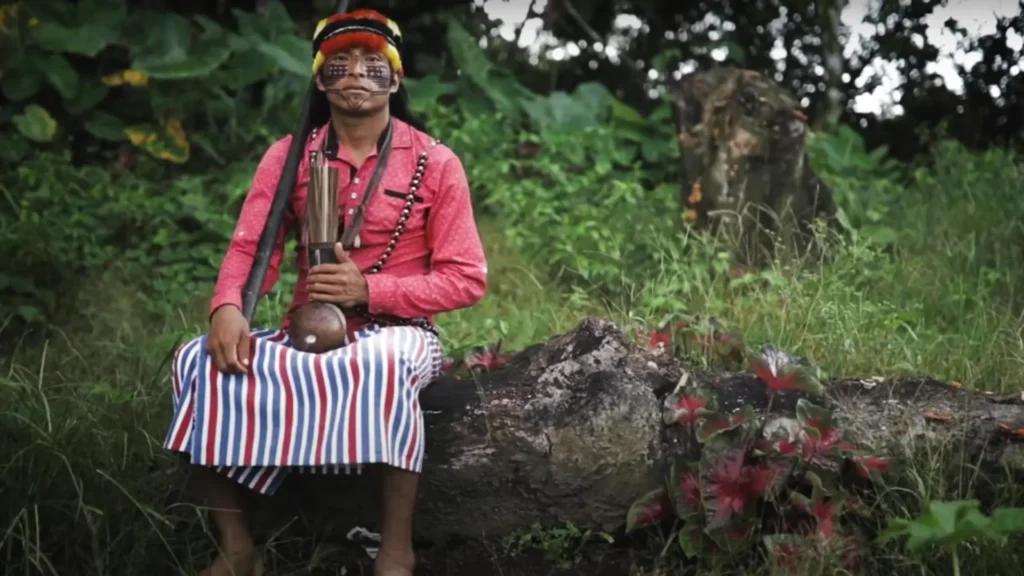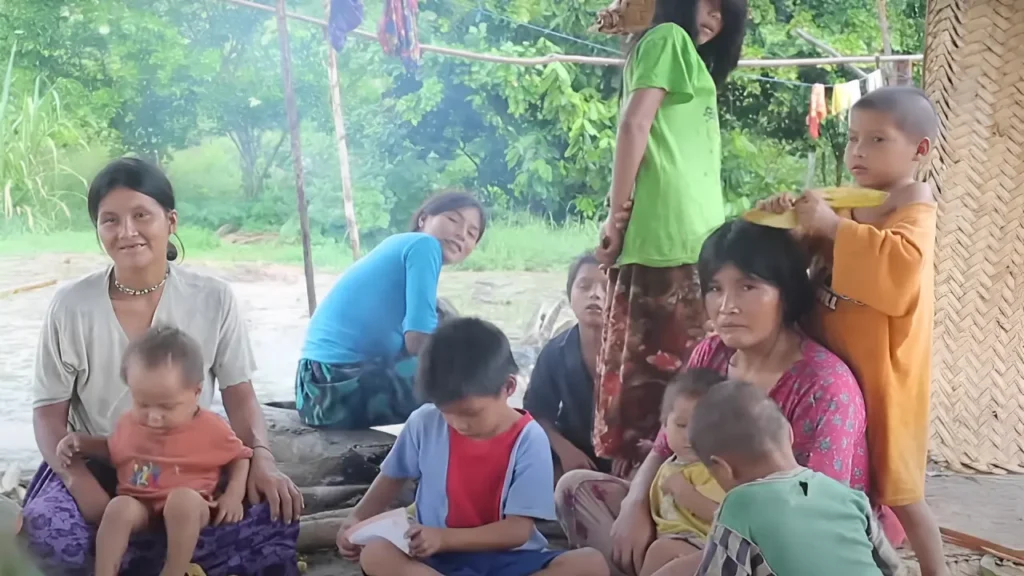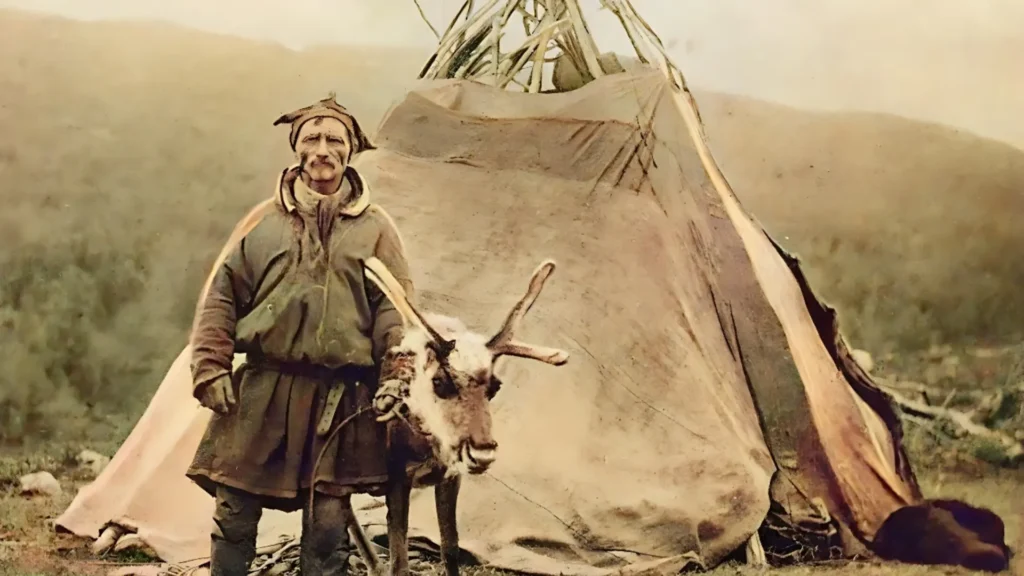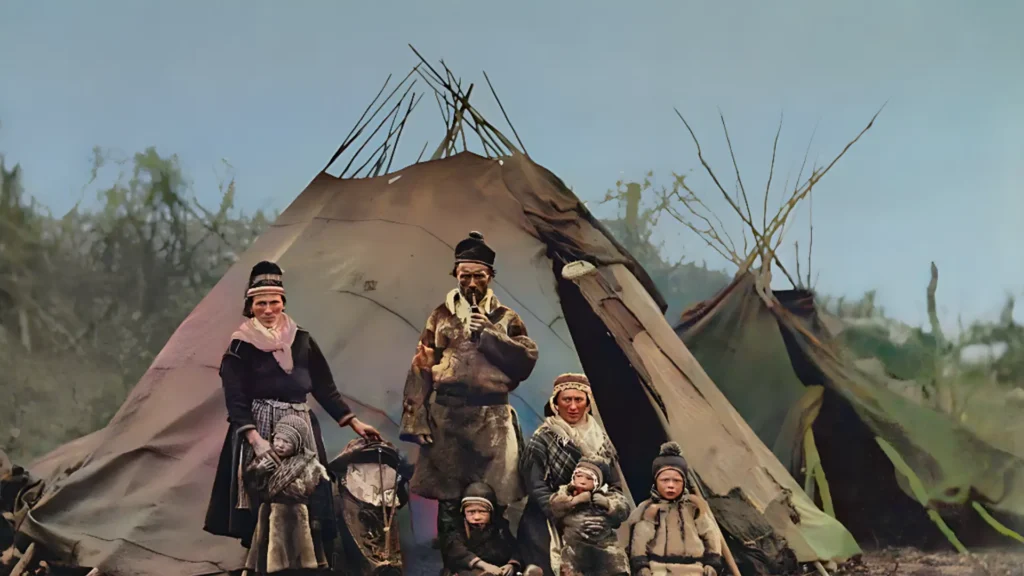Tribal diets provide a glimpse into the culinary traditions of indigenous communities across the globe. These foods are deeply rooted in cultural heritage and provide valuable insights into sustainable nutrition. From the lush forests of eastern India to the icy landscapes of northern Canada, tribal diets are as diverse as their environments. Let’s delve into the intriguing world of these traditional eating patterns and discover how they can counter malnutrition and disease.
Table of Contents
Hadza Tribe And Their Tribal Diets (Tanzania)
The Hadza Tribe, also known as the Hadzabe, is an indigenous ethnic group living in northern Tanzania. They follow traditional practices that offer valuable insights into sustainable nutrition and overall well-being. Their lifestyle has much to teach us about how to live in harmony with nature.
Diet of the Hadza Tribe
- Hunter-Gatherer Lifestyle:
- The Hadza are modern hunter-gatherers, living in a way that closely resembles our ancestors’ existence.
- They have no domesticated livestock and do not engage in agriculture or food storage.
- Instead, they rely on traditional methods of hunting and foraging for sustenance.
- Plant-Based Diet:
- The Hadza’s diet is primarily plant-based but also includes animal products.
- Edible plants: They collect tubers, berries, and baobab fruit from their environment.
- Meat and fat: They hunt game and consume meat and fat.
- Honey: Honey is another essential part of their diet.
- High Fiber Intake:
- The Hadza consume an enormous amount of dietary fiber, far exceeding the average Western diet.
- Their staple foods include fiber-rich fruits and tubers, especially from baobab trees, providing over 100 grams of dietary fiber daily
Health Benefits
- Gut Microbiome Diversity:
- Scientists have found that the Hadza tribe has one of the most complex and beneficial spectrums of gut bacteria globally.
- Their diverse microbiome contributes to overall health, affecting metabolism, immune function, and even mood.
- Genetic Resilience:
- Genetically, the Hadza represents one of the oldest lineages of contemporary humans.
- They have occupied their current territory for thousands of years, preserving their basic way of life.
- Their resilience highlights the importance of maintaining diverse cultural practices and dietary patterns.
- Protection Against Modern Ailments:
- Despite their high-fat diet, the Hadza have low rates of heart disease.
- Their lifestyle and unique gut microbiome may contribute to their resistance to Western ailments like diabetes and asthma.
- Preserving Ancient Wisdom:
- The Hadza’s continued survival and preservation of their culture are crucial.
- They serve as a living link to human existence largely abandoned by most of humanity.
- Encroaching pastoralists and tourism pose threats to their traditional way of life.
The Hadza Tribe’s diet, rich in plant foods, meat, and honey, and their unique gut microbiome exemplify ancient wisdom. They remind us of the importance of cultural diversity and sustainable nutrition.
Maasai Tribe
The Maasai Tribe, also known as the Masai or Maa-speaking people, inhabit the grasslands of Kenya and northern Tanzania. Their traditional lifestyle, deeply connected to their pastoralist heritage, offers valuable insights into health and longevity.
Diet of the Maasai Tribe
- Carnivorous Trinity:
- The core of the Maasai meals revolves around a carnivorous trinity: meat, milk, and blood.
- Their diet is as full of fats as that of people living in the West.
- Meat and Milk:
- Meat: Reindeer herding and cattle farming provide a steady supply of meat.
- Milk: Fresh and curdled milk is consumed, often mixed with fresh cattle blood.
Health Benefits
- Omega-3 Fatty Acids:
- Blood tests reveal healthy omega-3 fatty acids in the Maasai’s red blood cells.
- Despite their high-fat diet, they don’t suffer from lifestyle diseases.
- Moderate Physical Activity:
- The Maasai’s good health isn’t due to intense physical activity.
- Moderate but constant physical activity, primarily walking, contributes to their well-being.
The Maasai Tribe’s diet, rich in meat, milk, and blood, exemplifies the delicate balance between tradition, nutrition, and overall health.
Himba Tribe (Namibia)
The Himba Tribe, nestled in the rugged landscapes of northern Namibia, stands as custodians of a rich cultural legacy. Their way of life, deeply intertwined with the land, offers valuable insights into sustainable living and health. Let’s explore their diet and the associated benefits
Himba Diet: A Blend of Tradition and Adaptation
- Sour Milk and Maize Porridge:
- The Himba’s main diet revolves around sour milk and maize porridge.
- Due to milk and meat scarcity, they sometimes consume plain hard porridge.
- They eat cornmeal, chicken eggs, wild herbs, and honey along with their regular diet.
- Otjize Paste:
- Himba people, especially women, are famous for covering themselves with otjize paste.
- This mixture of butterfat and ochre pigment serves multiple purposes:
- Cleansing: Over time, otjize cleanses the skin due to water scarcity.
- Sun Protection: The red ochre acts as a natural sunscreen, shielding their skin from intense heat and preventing sunburn.
- Moisturization: It keeps their skin moisturized, preventing dryness caused by the arid environment.
Health Benefits
- Visual Acuity:
- The Himba people exhibit astonishing vision and focus.
- Their ability to see fine details and ignore distractions surpasses that of most other human beings.
- Resilience and Adaptation:
- The Himba’s lifestyle, rooted in tradition, reflects their deep connection to nature.
- Their unique visual focus and attention highlight the ways modern life may have altered our minds.
- Cultural Preservation:
- As younger generations encounter modernity in towns like Opuwo, the Himba’s resilience becomes crucial.
- Their customs, art, music, and dancing continue to thrive, preserving their cultural heritage.
The Himba Tribe’s diet, combined with their unique practices like otjize, exemplifies the delicate balance between tradition and adaptation. Their health benefits extend beyond physical well-being, emphasizing the importance of cultural preservation and ecological harmony.
San Bushmen (Botswana and Namibia)
The San Bushmen, also known simply as the San, are the oldest known inhabitants of Southern Africa, where they have thrived for over 20,000 years. These indigenous hunter-gatherers span across the territories of Botswana, Namibia, Angola, Zambia, Zimbabwe, Lesotho, and South Africa. Their rich cultural heritage and unique way of life offer valuable insights into sustainable living and health.
Diet of the San Bushmen
- Hunter-Gatherer Lifestyle:
- The San Bushmen follow a traditional hunter-gatherer lifestyle, relying on the natural resources of their environment.
- Their diet is shaped by the Kalahari Desert, where they live.
- Plant-Based Foods:
- Vegetables and Fruits: The San gathers a variety of wild fruits, nuts, roots, and melons.
- Tubers: They consume wild yams and other edible plant parts.
- Honey: The San collect wild honey from beehives.
- Animal Protein:
- The San’s diet includes various animals such as antelope, zebra, porcupine, wild hare, lion, giraffe, fish, insects, tortoise, and snakes.
- They also consume eggs and wild honey.
- Utilization of Every Part:
- The San Bushmen utilize every part of the animal they hunt.
- Water being scarce, they collect moisture by scraping roots or digging holes in the sand to find water.
Health Benefits and Resilience
- Nutrient-Rich Foods:
- The San’s diet provides essential vitamins, minerals, and antioxidants.
- Their reliance on natural foods supports overall health.
- Active Lifestyle:
- Constant movement through the Kalahari desert keeps them physically fit.
- Their active lifestyle contributes to cardiovascular health.
- Spiritual Connection:
- The San perceive the desert as a living entity.
- Their rituals and practices reinforce their spiritual bond with nature.
- Cultural Preservation:
- Despite challenges, the San have fought for their rights and cultural survival.
- Their resilience and knowledge exemplify the delicate balance between tradition and adaptation.
The San Bushmen’s diet, rich in plant foods and animal protein, along with their unique practices, underscores the importance of cultural preservation and ecological harmony.
Batek Tribe (Malaysia)
The Batek Tribe, also known as the Bateq, is an indigenous Orang Asli people residing in the rainforests of peninsular Malaysia. Their unique lifestyle, deeply intertwined with the jungle, offers valuable lessons about sustainable living and health. Let’s explore their diet and the associated benefits.
Batek Diet: A Forest Bounty
- Hunter-Gatherer Lifestyle:
- The Batek are nomadic hunters and gatherers, relying on the forest for sustenance.
- Their settlements shift within the general confines of the area they inhabit, reflecting their deep connection to the land.
- Plant-Based Foods:
- Tubers, fruits, leaves, and shoots form a significant part of their diet.
- They forage for wild yams, collect forest fruits, and utilize edible plants from their environment.
- Animal Protein:
- The Batek hunt small game such as monkeys, squirrels, and birds.
- Fish also contributes to their protein intake.
- Traditional Gathering:
- They use blowpipes and poison darts for hunting.
- Their diet is diverse, reflecting the rich biodiversity of the rainforest.
Health Benefits
- Nutrient-Rich Foods:
- The Batek’s diet provides essential vitamins, minerals, and antioxidants.
- Their reliance on natural foods supports overall health.
- Active Lifestyle:
- Constant movement through the jungle keeps them physically fit.
- Their active lifestyle contributes to cardiovascular health.
- Mental Well-Being:
- Living in harmony with nature fosters mental resilience.
- The forest provides a sense of purpose and connection.
- Cultural Wisdom:
- The Batek’s forest knowledge is invaluable for conservation.
- Their sustainable practices can inspire modern societies.
The Batek Tribe’s diet, rooted in the rainforest, exemplifies the delicate balance between humans and nature. Their health benefits extend beyond physical well-being, emphasizing the importance of cultural preservation and ecological harmony.
Yanomami Tribe (Amazon Rainforest)
The Yanomami Tribe lives in the Amazon jungle, between Venezuela and Brazil. They have a unique way of living that promotes wellness and sustainability. Let’s take a closer look at their diet and its health benefits.
Yanomami Diet: A Blend of Tradition and Adaptation
- Hunter-Gatherer Lifestyle:
- The Yanomami follow a traditional hunter-gatherer lifestyle, relying on the forest’s resources for sustenance.
- Their diet is shaped by the lush rainforest they inhabit.
- Plant-Based Foods:
- Fruits and Nuts: The Yanomami gathers wild fruits, nuts, and roots.
- Tubers: They consume wild yams and other edible plant parts.
- Honey: The Yanomami collect wild honey from beehives.
- Animal Protein:
- The Yanomami hunt small game animals such as monkeys, birds, and wild pigs.
- They also rely on fish for protein.
- Insects provide additional protein from the rainforest.
Health Benefits
- Nutrient-Rich Foods:
- The Yanomami’s diet provides essential vitamins, minerals, and antioxidants.
- Their reliance on natural foods supports overall health.
- Active Lifestyle:
- Constant movement through the rainforest keeps them physically fit.
- Their active lifestyle contributes to cardiovascular health.
The Yanomami tribe’s diet is based on tradition and ecological wisdom. They value cultural preservation and environmental harmony, which is reflected in their food choices. This way of eating serves as a reminder of the importance of maintaining cultural traditions and protecting the environment.
Kuna Tribe (Panama)
The Kuna Tribe, who live on the San Blas Islands off Panama’s coast, have caught the attention of researchers because they are particularly healthy and live long lives. These indigenous people have a traditional diet that is rich in cacao. Their diet is unique, and researchers are interested in how it can help prevent diseases and promote good health.
The Kuna Diet
- Cacao (Cocoa):
- The Kuna consume four to five cups of unprocessed cocoa daily.
- Their cocoa is rich in flavonoids, particularly (-) epicatechin, which contributes to their health benefits.
- Other Foods:
- Beyond cocoa, the Kuna also benefit from a diet that includes:
- Fish: They consume fish regularly.
- Fruits and Nuts: Wild fruits, nuts, and roots are part of their diet.
- Tubers: They eat wild yams and other edible plant parts.
- Beyond cocoa, the Kuna also benefit from a diet that includes:
Health Benefits
- The Kuna’s high flavonoid intake contributes to cardiovascular health.
- They exhibit low rates of heart disease, likely due to their cocoa consumption.
The Kuna Tribe’s focus on cocoa in their diet represents a delicate balance between tradition, nutrition, and overall well-being.
Achuar Tribe (Amazon Rainforest)
The Achuar Tribe, nestled within the lush expanse of the Amazon rainforest in Ecuador and Peru, embodies a harmonious relationship with nature. Their traditional food and lifestyle offer valuable insights into sustainable living and well-being.
Achuar Diet: Nourishing from the Forest
- Hunter-Gatherer Lifestyle:
- The Achuar are nomadic hunter-gatherers, relying on the forest’s bounty for sustenance.
- Their diet includes a diverse range of plant-based foods and wild game.
- Plant-Based Foods:
- Fruits: The Achuar gather and consume a variety of fruits, including bananas, papayas, guavas, and other wild fruits.
- Vegetables: They cultivate and consume yucca (cassava), sweet potatoes, plantains, maize (corn), beans, and peppers.
- Animal Protein:
- The Achuar hunt small game animals such as peccaries, monkeys, tapirs, and birds.
- They also rely on birds and eggs for protein.
- Insects like grubs, ants, and termites provide additional protein from the rainforest.
Health Benefits
- Nutrient-Rich Foods:
- The Achuar’s food provides essential vitamins, minerals, and antioxidants.
- Their reliance on natural foods supports overall health.
- Active Lifestyle:
- Constant movement through the jungle keeps them physically fit.
- Their active lifestyle contributes to cardiovascular health.
- Spiritual Connection:
- The Achuar perceive the rainforest as a living entity.
- Their daily rituals and practices around dreams reinforce their spiritual bond with nature.
- Cultural Preservation:
- The Achuar’s commitment to preserving their culture and environment is evident.
- Their sustainable practices inspire us to protect the Amazon rainforest.
The Achuar Tribe’s food, deeply rooted in tradition and ecological wisdom, exemplifies the delicate balance between humans and their natural surroundings. Their health benefits extend beyond physical well-being, emphasizing the importance of cultural preservation and environmental harmony.
Tsimane Tribe (Bolivian Amazon)
The Tsimane Tribe, native to the Bolivian Amazon, challenges conventional health norms with their exceptional well-being, providing important insights into longevity and heart health through their lifestyle and food habits.
Diet of the Tsimane Tribe
- Carbohydrate-Rich Foods:
- The Tsimane primarily consumes unprocessed carbohydrates such as rice, plantains, manioc, and corn.
- Their diet is low in saturated fats and high in fiber.
- Lean Protein Sources:
- Wild Game: They hunt for deer, monkeys, and tapirs.
- Fish: Freshwater fish contribute to their protein intake.
- Minimal Processed Foods:
- The Tsimane avoid processed foods prevalent in Western diets.
Health Benefits and Resilience
- Heart Health:
- The Tsimane have minimal risk of heart disease and almost no hardening of the arteries.
- Their active lifestyle and natural diet contribute to their robust cardiovascular health.
- Brain Aging:
- Despite inflammation, their brains age more slowly than those of Westerners.
- Their lifestyle emphasizes physical activity and whole foods.
- Lessons for Modern Living:
- The Tsimane people’s way of life shows that adopting a natural food, managing blood pressure, keeping LDL cholesterol low, and doing regular physical activity can promote a healthy heart.
Tsimane Tribe’s lifestyle and diet showcase the delicate balance between tradition, nutrition, and overall well-being.
Inuit (Eskimo) Diet
The Inuit, also known as Eskimos, live in the vast and cold Arctic regions of Greenland, Canada, Alaska, and parts of Russia. Their traditional way of eating, adapted to their challenging environment, offers valuable insights into how humans can adapt and endure. In this discussion, we will explore the Inuit food and the potential health benefits it provides.
Inuit Diet: A Unique Culinary Heritage
- Animal Source Foods:
- Historically, the Inuit mainly consumed animal foods obtained through hunting, fishing, and local gathering.
- The area they lived in had plenty of resources such as sea mammals like seals, walruses, and whales. There were also birds, fish, and land mammals like reindeer, polar bears, and muskox..
- High-Fat, Low-Carb Profile:
- The Inuit people’s traditional diet was low in carbohydrates because there weren’t many plant-based foods available in the Arctic.
- Fatty meats, such as whale blubber and seal fat, were staples.
- No agriculture or dairy: Unlike Western diets, the Inuit had no access to cultivated crops or dairy products.
- Nutrient-Rich Choices:
- Whale meat, particularly from narwhals, beluga whales, and bowhead whales, contains protein, omega-3 fatty acids, and vitamin D which are essential nutrients for the body.
- Seal meat, particularly from ringed seals and bearded seals, was a significant part of their diet.
- Fish, both saltwater (Arctic cod, Arctic char) and freshwater (lake trout), contributed to their nutrition.
- Traditional Gathering:
- Inuit also gathered berries (crowberry, cloudberry), herbaceous plants, and tubers from the tundra.
- They utilized seaweed as a valuable food source.
Health Benefits of the Inuit Diet
- Heart Health:
- Despite the high fat content, the Inuit had low rates of heart disease.
- Their unique genetic adaptations allowed them to thrive on a diet rich in animal fats.
- Omega-3 fatty acids from fish and marine mammals likely played a protective role.
- Insulin Sensitivity:
- The Inuit’s low-carb diet may have contributed to better insulin sensitivity.
- Their bodies efficiently utilize fats for energy, reducing the risk of type 2 diabetes.
- Cognitive Function:
- Omega-3s and other nutrients in their diet support brain health.
- The Inuit maintained mental acuity despite extreme conditions.
- Bone Health:
- The diet’s focus on animal foods provided essential nutrients like calcium and vitamin D.
- Their strong bones were crucial for survival in the Arctic.
- Resilience and Adaptation:
- The Inuit’s ability to thrive in extreme environments underscores their remarkable genetic resilience.
- Their diet exemplifies how humans can adapt to diverse nutritional patterns.
The Inuit places great emphasis on eating foods that are appropriate for their specific environment. This approach highlights the complex relationship between genetics, environment, and dietary choices that can affect health outcomes. In summary, the Inuit food habits show that the food we eat can have a significant impact on our health and well-being and that it is important to consider the context in which we live when making dietary choices.
Saami Tribe (Scandinavia)
The Sámi Tribe, which is also called the Saami or Lapp people, lives in the northernmost parts of Scandinavia, including Norway, Sweden, Finland, and some areas of Russia. Their traditional way of life and food habits are closely connected to the natural environment, providing valuable knowledge about well-being and cultural strength.
Diet of the Saami Tribe
- Reindeer Meat:
- Reindeer herding is a cornerstone of Saami culture and sustenance.
- Reindeer meat is a staple food, providing essential nutrients like protein and iron.
- It is often consumed in various forms, including dried, smoked, or stewed.
- Fish and Game:
- The Saami people rely on fish from the rivers and lakes, including species like salmon, whitefish, and perch.
- Game meats such as moose and bird species are also important sources of protein.
- Berries and Herbs:
- Berries are essential in Saami cuisine due to their abundance during the short summer season.
- Cloudberry is particularly valued for its unique flavor and high vitamin C content.
- Herbs from the forest are used to enhance flavors.
Health Benefits
- Nutrient-Rich Foods:
- The Saami diet provides essential vitamins, minerals, and antioxidants.
- Their reliance on natural foods supports overall health.
- Adaptation to Climate:
- The Saami people have adapted their food habits to the harsh Arctic climate.
- Their reliance on local resources demonstrates their ability to thrive in challenging conditions.
The food habits of the Saami tribe, which consists of reindeer meat, fish, and berries, represent a delicate balance between tradition, nutrition, and well-being.
As we explore the dietary practices of indigenous tribes, it’s essential to consider how we can integrate their wisdom into our urban lives. While adopting tribal dietary practices fully may not be feasible or practical, so learn from the wisdom of indigenous tribes while respecting our modern realities. By blending tradition with practicality, we can create a healthier, more mindful approach to eating.
